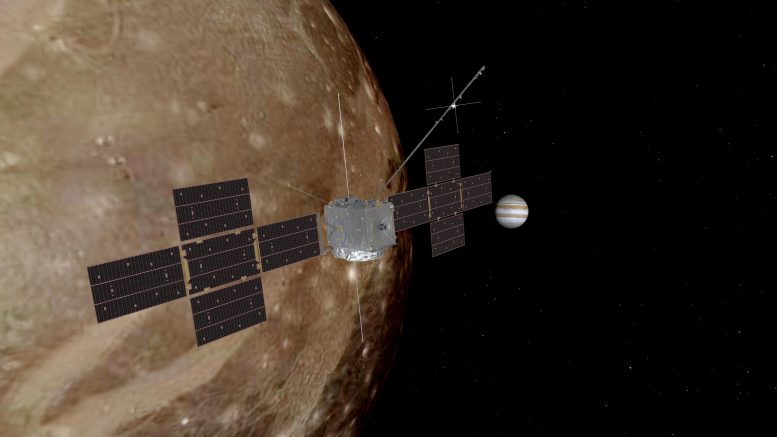
Juice will make detailed observations of the giant gas planet and its three large ocean-bearing moons – Ganymede, Callisto, and Europa – with a suite of instruments. By making flybys of these moons at distances of just a few hundred kilometers, and even going into orbit around Ganymede, Juice will characterize them as both planetary objects and possible habitats. The mission will also explore Jupiter’s complex environment in-depth, and study the wider Jupiter system as an archetype for gas giants across the Universe. Credit: ESA (Acknowledgment: ATG Medialab)
ESA’s Juice mission will explore Jupiter and its intriguing Galilean moons — Ganymede, Europa, and Callisto — to study their hidden oceans, magnetic fields, and surface features, ultimately orbiting Ganymede to investigate their potential habitability and properties.
ESA’s JUpiter ICy moons Explorer (Juice) will spend years in the Jovian system exploring the gas giant Jupiter, its space environment, and its intriguing satellites. Juice will pay particular attention to three of Jupiter’s ‘Galilean moons’: Ganymede, Europa, and Callisto.
These three moons are thought to harbor hidden oceans beneath their surfaces, making them prime targets in our exploration of whether, how and where life could arise in different environments across the cosmos. Juice’s tour of Jupiter will include multiple flybys of these ocean-bearing moons, before culminating in orbit insertion around Ganymede – the first time a spacecraft will have orbited a moon in the outer Solar System.
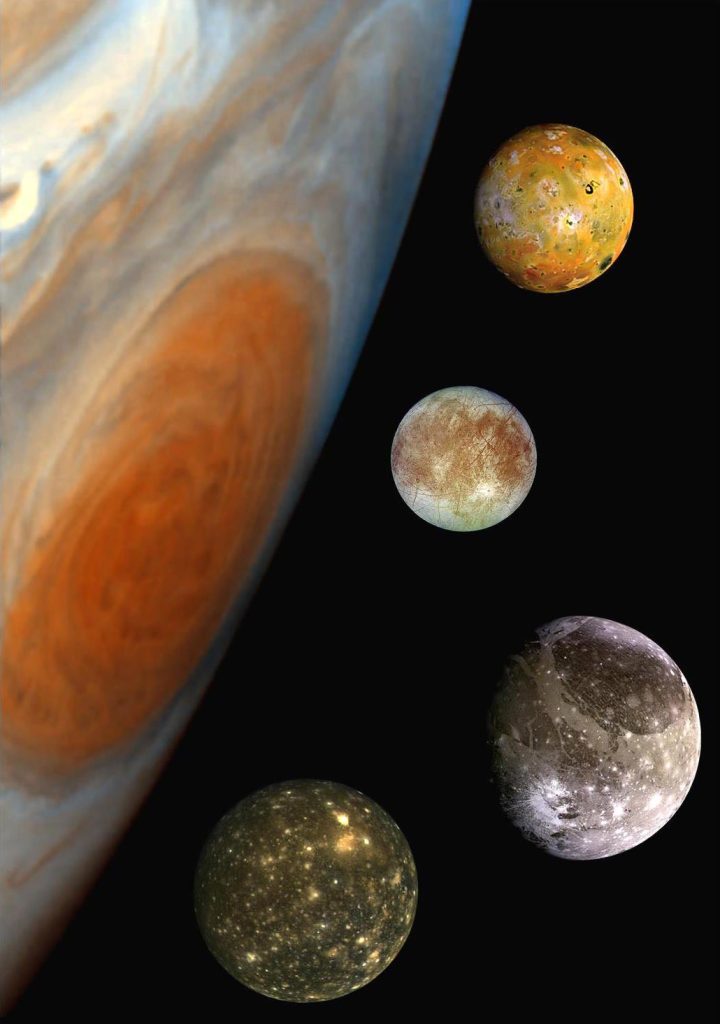
This ‘family portrait’ shows a composite of images of Jupiter, including its Great Red Spot, and its four largest moons. From top to bottom, the moons are Io, Europa, Ganymede, and Callisto. Europa is almost the same size as Earth’s moon, while Ganymede, the largest moon in the Solar System, is larger than planet Mercury. Credit: NASA/JPL/DLR
By investigating Ganymede, Europa, and Callisto as a trio, Juice will paint a comparative picture of the environments of each and shed light on their properties and potential habitability.
Ganymede
Juice’s primary scientific target will be Ganymede, the largest moon in the Solar System – larger even than Pluto and Mercury.
During its tour of the Jupiter system, Juice will make 12 flybys of Ganymede starting in July 2031, and will eventually become the first spacecraft to orbit another planet’s moon. This video shows Juice performing its first flyby of Ganymede a few hours before Jupiter orbit insertion, with the giant planet visible in the background. Credit: ESA/Lightcurve Films/R. Andres
It is also the only moon in the Solar System to generate its own magnetic field. Juice will complete numerous flybys around Ganymede, and eventually enter orbit around the moon. The spacecraft will explore various key topics: Ganymede’s mysterious magnetic field, its hidden ocean, its complex core, its ice content and shell, its interactions with its local environment and that of Jupiter, its past and present activity, and whether or not the moon could be a habitable environment.
Ganymede is an especially exciting target for a number of reasons. It displays a wide range of surface ages and features, offering a geological record spanning several billions of years; it has an active magnetic dynamo and subsurface ocean; and has a complex and unique relationship with the space environment around its parent planet, Jupiter. Notably, Ganymede’s intrinsic magnetic field has generated a mini ‘magnetic bubble’ (magnetosphere) sitting within Jupiter’s larger one, and the two interact in highly complex and intriguing ways.
Juice will shed light on these aspects by…
- …determining the extent, composition and dynamics of its subsurface ocean, including how water transfers from the deep interior to upper ice shell, and seeking signs of shallow subsurface water reservoirs;
- … characterizing Ganymede’s magnetic field, revealing what drives and maintains the moon’s internal dynamo, and identifying the particle groups found around the moon (how are these replenished, and how do they interact with Ganymede and Jupiter?);
- …exploring how Ganymede’s surface features, processes, and topography relate to its subsurface, defining the thickness and structure of the moon’s icy crust and mapping its geology, composition, chemistry, and evolution over time.
After arrival in the Jovian system, Juice will perform five Ganymede flybys (2031–2032) to reduce its orbital energy so that it can effectively explore Jupiter; it will later transfer from Jupiter to Ganymede orbit, beginning its investigations of the moon in earnest in late 2034. It will end its mission by colliding with Ganymede’s surface in 2035.
Europa
Juice will complete two flybys of Europa in July 2032, approaching the moon at a closest approach of 400 km. During these close encounters, Juice will explore the geology, surface, subsurface, activity, and environment of the moon, which appears to have a young, active, colorful, and distinctively marked surface.
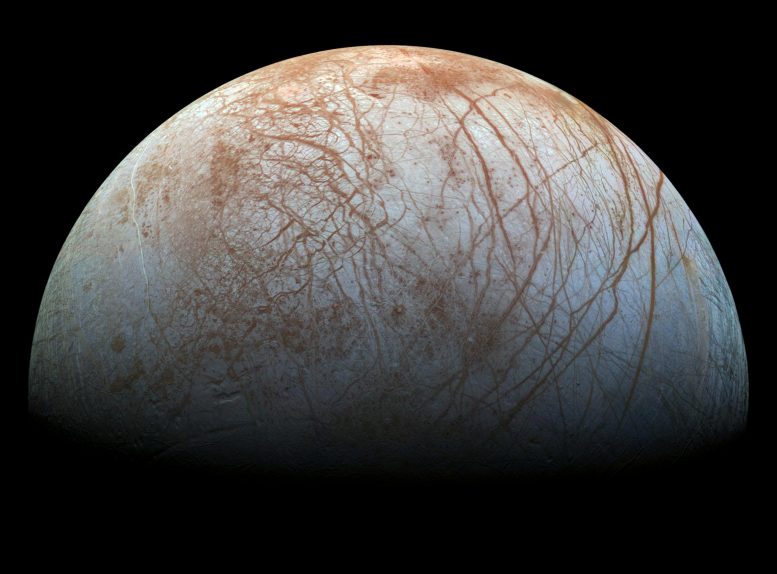
A view of Europa created from images taken by NASA’s Galileo spacecraft in the late 1990s. Jupiter’s moon Europa is a fascinating world. On its surface, the moon appears to be scratched and scored with reddish-brown scars, which rake across the surface in a crisscrossing pattern. These ‘scars’ are etched into a layer of water ice, which is thought to be at least several kilometers thick and covering a vast – and potentially habitable – subsurface ocean. Credit: NASA/JPL-Caltech/SETI Institute
The mission will characterize the composition and chemistry of Europa’s surface, hunting for substances that are essential to support life (‘biosignatures’) and determining the source of the moon’s material (especially volatiles and hydrated minerals). Europa may vent water vapor to space via ‘plumes’ and geysers; Juice will search for pockets of water in the moon’s shallow subsurface using unprecedented ice-penetrating radar, and reveal locations where the transfer of material between subsurface, surface, and space may be especially intense.
Juice will explore Europa by…
- … characterizing the composition and chemistry of its surface, including searching for biosignatures and exploring how both internal and external factors (including tectonics, cryovolcanism, and surface erosion) have shaped Europa’s surface over time;
- …searching for liquid water under Europa’s most active sites, from probing the crust (which may be only a few km thick in places) to surveying the depth of the moon’s subsurface ocean;
- …studying these active sites and processes themselves, revealing their geology, composition, and any current levels of activity.
Callisto
Juice will complete its first flyby of Callisto in June 2032; the spacecraft will complete a total of 21 flybys of this moon from 2032–2034 (both to explore the moon and to adjust the energy and orientation of Juice’s orbit), coming as close as 200 km from Callisto at nearest approach.
During its tour of the Jupiter system Juice will perform a total of 21 flybys of Callisto, an ancient, cratered world that may harbor a subsurface ocean. Some of the Callisto flybys will also change the angle of Juice’s orbit with respect to Jupiter’s equator, making it possible to investigate the giant planet’s polar regions and environment at higher latitudes. Credit: ESA/Lightcurve Films/R. Andres
Previous observations from NASA’s Galileo mission suggest that Callisto has at least partial internal layers; however, its surface is very old and appears not to have been geologically active for a billion years or so, and so it is unclear if the moon has any ongoing internal dynamics. Despite this Callisto appears to have a magnetic field that is not generated internally, like that at Ganymede, but is instead produced either by a large liquid reservoir lurking below its icy shell, or due to interactions in Callisto’s ionized upper atmosphere.
Callisto is also the least geologically evolved Galilean satellite, and therefore offers a unique glimpse into the environment around early Jupiter. As the moon does not seem to have evolved much over time, it stands to reveal unique information about how it initially formed, and about the origin of the wider Jupiter system.
Juice will investigate Callisto as a remnant of the early Jovian system by…
- …exploring its outer shell and ocean down to a depth of a few kilometers to constrain its interior structure and gravity;
- … characterizing the composition and chemistry of its surface, especially any non-water-ice compounds, and identifying how Callisto releases material to space;
- …hunting for signs of past activity and determining how this connects to both its past evolution and the surface features we see today (such as Callisto’s characteristic dark, densely cratered plains, which show signs of unique erosion and degradation processes). Juice will image Callisto on both regional and global scales to achieve this.
Io and inner moons
While not a primary focus for Juice, the fourth and innermost Galilean moon, Io, is no less interesting, being the most volcanically active object in the Solar System. Io has over 400 active volcanoes scattered across its surface, which release gases, dust, and ionized material into Io’s atmosphere. This material is swept up by the magnetic influence of Jupiter and spread throughout the Jovian system.
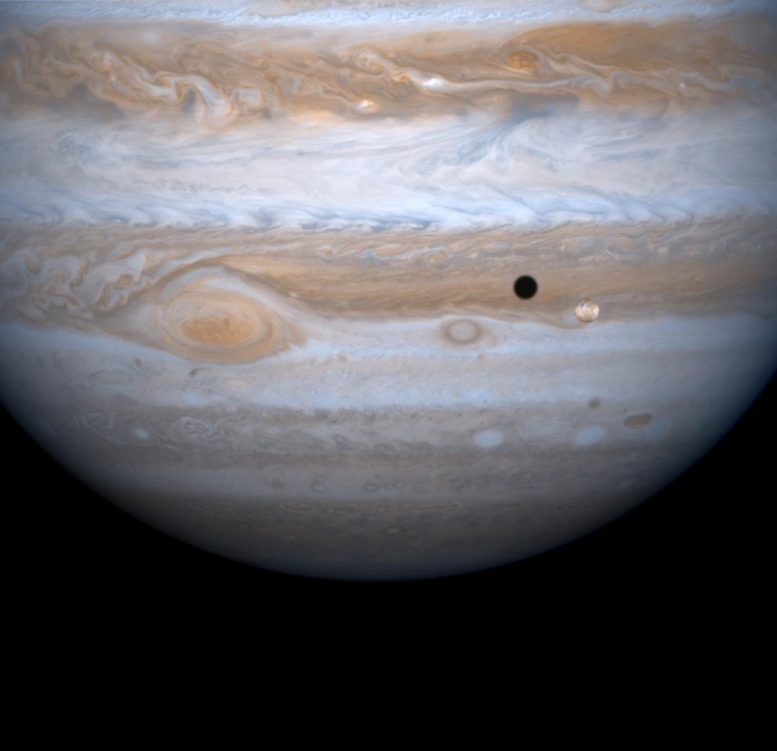
Jupiter’s four largest satellites, including Io, the golden ornament in front of Jupiter in this image from NASA’s Cassini spacecraft, have fascinated Earthlings ever since Galileo Galilei discovered them in 1610 in one of his first astronomical uses of the telescope. This true-color composite frame, made from narrow-angle images taken on December 12, 2000, captures Io and its shadow in transit against the disk of Jupiter. The distance of the spacecraft from Jupiter was 19.5 million kilometers. Credit: NASA/JPL/University of Arizona
While Juice will not focus on exploring Io in-depth, the mission will gather information on this Galilean moon, investigating how Io helps shape the plasma environment of its planet, characterizing how and why the moon is so volcanically, tidally, and geologically active, and determining the composition of its surface.
Alongside the Galilean moons, Juice will observe a number of Jupiter’s smaller inner moons, which orbit within and pass through the gas giant’s famous ring system.
These are thought to emit dust that replenishes Jupiter’s rings, although the mechanisms behind this process remain unclear. Juice will investigate the shape, composition, and orbits of Metis, Adrastea, Amalthea, and Thebe, to reveal their role within the Jovian system.

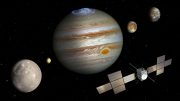

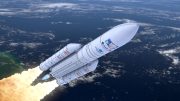
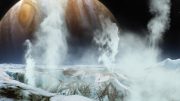
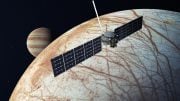
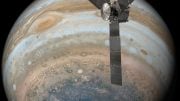

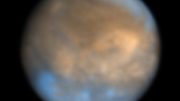
Be the first to comment on "Squeezing Secrets From Jupiter’s Moons: Juice’s Expedition to the Outer Solar System"